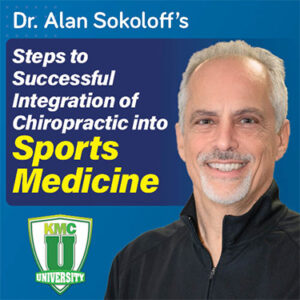Posted by Team KMCU on Apr 11, 2025
In chiropractic care, solid documentation is everything.
It not only helps you get a clear picture of how a patient is doing, but it also serves as an essential medical record. One of the most effective ways to document objective findings in your daily notes is by using the PART system physical examination: Pain/Tenderness, Asymmetry/Misalignment, Range of Motion Abnormality, and Tissue/ Tone Changes. According to Medicare, you must have at least two of the four PART findings and at least one of them must be A or R. Let’s dive into how you can use the PART framework to create thorough and insightful notes.
The PART system provides a structured way to evaluate and document subluxations in each region of the spine, ensuring you cover all the important details. It makes the documentation process much more reliable and effective!
- Pain/Tenderness (P): This section captures the patient’s experience of pain. Be specific about the location, quality (sharp, dull, burning), intensity (using a numerical scale), onset/duration, and any aggravating or relieving factors. For example, instead of simply noting “low back pain,” specify “left-sided low back pain rated 6/10, described as dull ache, beginning two days ago after gardening, aggravated by bending, and relieved by rest.” This can also be reflected by your physical exam findings of pain upon palpation and response to other testing.
- Asymmetry/Misalignment (A): This focuses on observable postural and structural imbalances. Document any static palpation findings, postural analysis results (e.g., forward head carriage, pelvic tilt), and leg length discrepancies. Clear observations like “visual and static palpation reveals a right pelvic tilt” or “observation reveals a right shoulder drop” are essential. Asymmetry/misalignment can be used to identify a sectional or segmental level.
- Range Of Motion (ROM) Abnormality (R): This section assesses the patient’s ability to move their joints. Document both active (patient-initiated) and passive (clinician-assisted) ROM, noting any limitations or pain. Joint play findings should also be included to identify areas of hypomobility or hypermobility. Phrases like “limited active cervical rotation to the left” or “restricted joint play noted in the right SI joint” provide valuable information.
- Tissue, Tone Changes (T): This section focuses on the condition of the soft tissues. Document any changes in tissue texture (e.g., increased muscle tension, tenderness), muscle tone (hypertonicity, hypotonicity), and temperature (increased, decreased, or normal). For example, “increased muscle tension palpated in the left QL” or “coolness noted in the distal extremities.
Consider this example: “Patient reports left-sided low back pain (P: Location) rated 6/10, described as a dull ache (P: Quality, Intensity). The pain began two days ago after gardening (P: Onset). Pain is aggravated by bending and relieved by rest (P: Aggravating/Relieving). Visual observation reveals a right pelvic tilt (A: Observation). Active lumbar flexion is limited and painful (R: Active ROM). Upon palpation, reduced extension and right rotation at L5 (R: Decrease in Segmental mobility). Increased muscle tension palpated in the left QL (T: Tissue/Tone). Normal skin temperature (T: Temperature).”
By consistently utilizing the PART system and following these best practices, you can elevate your daily notetaking, enhance patient care, and reinforce your practice’s compliant documentation.
Dr. Erin Stubblefield graduated from Palmer College of Chiropractic in Davenport, IA in 2006. After practicing privately, she transitioned to education and taught Chiropractic education for 13 years before joining KMC University as a Specialist in 2024. Currently, Dr. Stubblefield is the owner of Sunflower Consulting, LLC, a healthcare consulting and practice coaching group. Dr. Stubblefield partners with KMC to provide accurate, current, and compliant information. For further information, you can reach her at drerin@kmcuniversity.com.







Comments on Playing Your PART: The Key to Effective Chiropractic Daily Notes